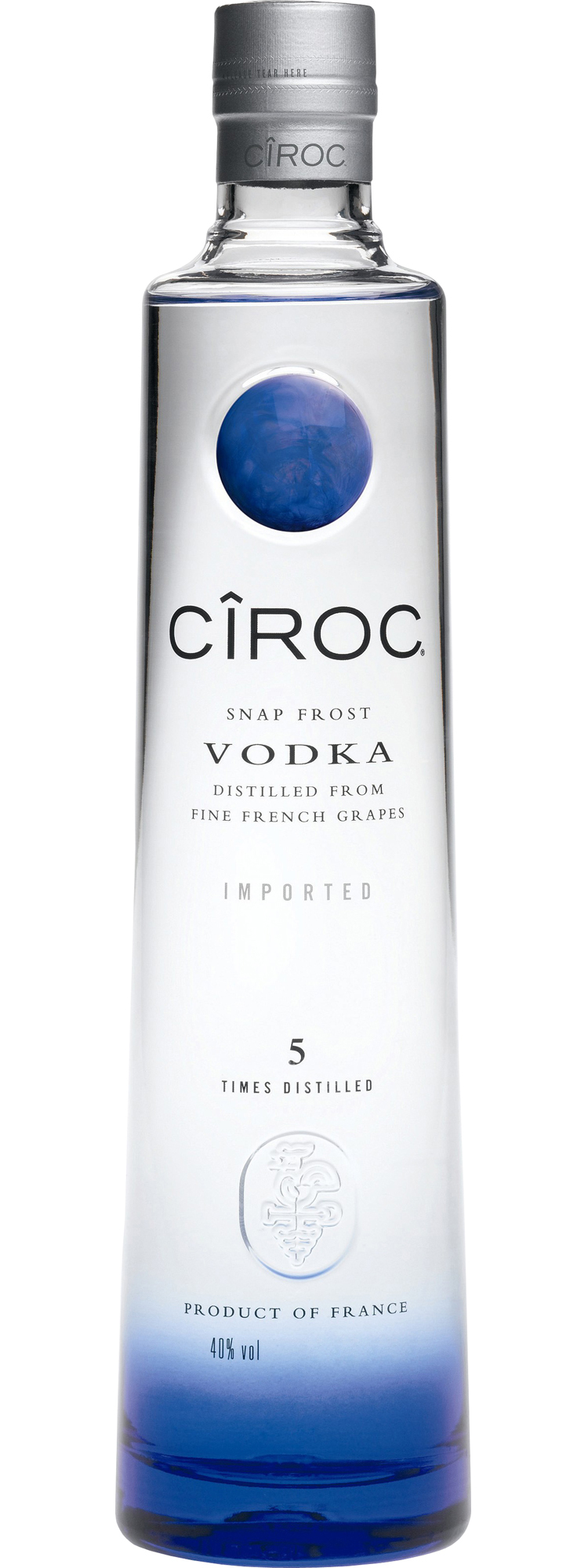If you live in Europe, especially in an area in the EU Vodka Belt, you’ve probably heard the term Vodka War being thrown around. You probably don’t need any explanation what that is all about, but for those who don’t live in the area or who just aren’t up to date, here’s the skinny.
Back in 2003, a brand of vodka known as Ciroc hit the scene. What made this particular blend so special? It wasn’t that it was 5 times distilled, although that in of itself would be a claim to fame. What actually set it distinctly apart from the rest of the crowd was that it was distilled from grapes – something that threw the vodka traditionalists for a loop. So much so that the Vodka Belt countries began arguing within the EU about the definition of which hard liquors may or may not be branded as “vodka.”

To that end, was there really a difference? Sure, every vodka has it’s own distinct tastes and flavors – but would there be a significant difference in taste? We chose to find out.

Ready to go!
We assembled a lovely trio of vodkas for the test. The aforementioned Ciroc, and two premium vodkas from Poland – Belvedere and Chopin, representing the “traditional” ingredients of wheat and potato respectively.

As per our regular methodology of taste testing vodka, here’s the skinny on our two-step process:
The Sip: Inhale and sip the vodka. Keep the sip on the palette and exhale through the nose, then inhale and swallow, taking note of the aftertaste.
The Down: Exhale, then inhale and down the entire shot.
I’ve had Belvedere before and quite liked it. It’s a rather complex tasting vodka (in the sense that you gotta go and look for it – the non-vodka drinkers will probably say it taste like nothing) and quite good normally as a sipping vodka, except for tonight. Whether we had an off bottle or not, we don’t know, but the vodka we had started out ok on the palette, quite a creamy texture, no real overpowering flavors as such, but it gave a rather harsh and unpleasant metallic aftertaste that lingered a little too long on the palette. It shot a lot better than it was sipped, but even then we had to clean our palette’s quickly afterwards. There’s not much of a burn to it, thankfully.
Now, as I said I’ve had Belvedere before and it was NOTHING like this, and normally I’d recommend this vodka heartily. Perhaps we just got an off-bottle tonight, but who knows. Look out for our vodka review soon on Belvedere vodka so we can set the record straight on this, most-of-the-time premium vodka.
Named after Poland’s famous pianist, Chopin is another premium vodka from Poland, this time made from potatoes. Potato vodka is generally considered to be slightly smoother than grain vodka, did that claim hold up? The first thing we noticed was it’s texture. It was quite viscous compared to Belvedere, and thus much creamier. On the palette it’s virtually flavorless, with only hints of sweet herbs and bitters. A slight burn on the way down with a slightly bitter but thankfully short finish. Not at all unpleasant. Was it smoother than the grain vodka? It certainly was, but we aren’t sure if that’s the rule in general or just because we had such an off experience with the last bottle.
Finally, the black sheep of the bunch. We could honestly say the last two tasted like vodkas, and for all intents and purposes are as close to what a -real- vodka should be, but how would Ciroc hold up?
Pretty well, actually. On the nose the vodka is quite fresh, with just a bit of a citrus-y scent to it. At first sip, you would swear Ciroc is actually a flavored vodka, but it isn’t. The taste of grapes and citrus comes out very clearly on the palette. The finish is crisp and very fresh with no harshness whatsoever and minimal burn. It doesn’t taste at all like a plain vodka should, but it’s delicious nevertheless. By far the smoothest one we tried of the night.
So yes, we can definitely, absolutely say there is a significant and very clear difference between the three, and you can taste the differences depending on what primary ingredient is used in the distillation process. Oddly enough, it was the non-traditional vodka we enjoyed the most, with the potato based one being second and finally the wheat. You can’t beat potato and wheat when you want a classic vodka, but don’t be afraid to experiment and try some new things. We were pleasantly surprised ourselves.


